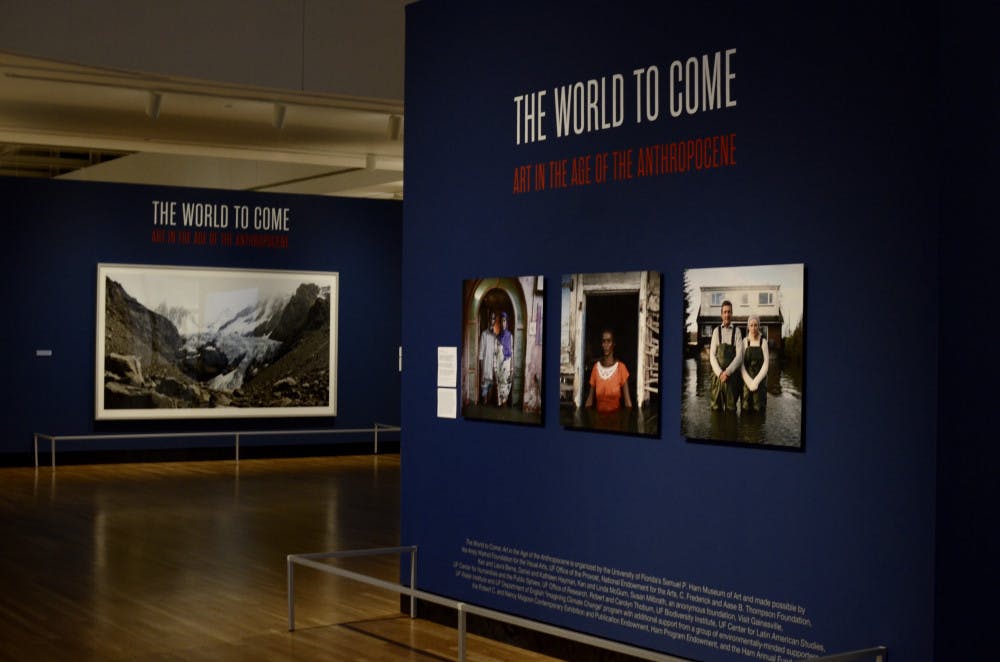The world’s population continues to grapple with climate change, hence the reason why exhibitions like that of the Harn Museum play a large role in dismantling fear and instead instilling the desire to create change.
The University of Florida’s Harn Museum in Gainesville, Fla., recently unveiled its newest exhibition, “The World to Come: Art in the Age of the Anthropocene,” on Sep. 18, 2018. Primarily through photography and videography, the collection showcases the environmental epidemic facing our world.
The 45 artists involved create a globally diverse exhibition serving to both highlight man’s authoritative relationship over nature and also suggest a better one. Florida classifies as an environmentally vulnerable area of the world, making the exhibition exceptionally impactful, according to the Harn’s website.
The Anthropocene refers to a geological epoch resulting from the impact of the human hand, according to the website. The exhibition aims to create a dialogue amongst all museum-goers about this controversial epoch and to bridge the gap between art, science and politics.
Events relating to climate change and the Anthropocene occur throughout the exhibition’s duration at the museum. One such event, a weekend symposium called “The World to Come: Art, Politics and Climate Change,” took place on Friday, October 19, and Saturday, October 20, a month after the exhibition’s unveiling.
The University of Florida’s Imagining Climate Change, or ICC, organized the symposium and invited speakers across various artistic and scientific fields of study. Terry Harpold, an associate professor in the department of English at UF and the director of ICC, wanted the diverse panel of speakers to help foster an all-inclusive dialogue about climate change.
“I am personally convinced that this is the greatest planetary challenge of our time,” Harpold said.
The humanities hold an important role in society, shedding light on a detrimental situation in ways beyond those of statistics and scientific research, according to Harpold. “We won’t adapt to the coming world unless we see a visual adaptation of it,” Harpold said.
Elizabeth King, the Harn’s gallery interpretation and public programs manager, collaborated with Harpold in planning the symposium. “It was a chance to think about and write about the interdisciplinary content of the exhibition in a formal way,” King said.
The exhibition allows viewers to look at climate change in a different light, and the artists bring attention to certain situations most people do not think of on a daily basis, according to King. “I think it shows the visitor the variety of events at play in creating the Anthropocene,” King said.
The museum’s location also makes the exhibition easily accessible to students of all majors, bringing them together to collectively learn more about an issue affecting everyone living on this planet.
Shannon Moriarty, an Art History student at UF and the Harn’s gallery interpretation and Museum Nights intern, worked under King’s guidance and played a role in the exhibition’s fruition. She spent the summer annotating the exhibition’s catalog alongside another former intern, according to her.
She emphasized the importance of this exhibition’s availability to both her peers and the Gainesville community at large. “They need to realize that how we treat the environment is so important, and we need to stop destroying it so quickly,” Moriarty said.
The exhibition remains on display until March 3, 2019, and the Harn’s next Museum Nights on Thursday, Nov. 8, 2018, will also center around environmental themes. For more information on both the exhibition and upcoming events happening in conjunction, visit the Harn’s website, www.harn.ufl.edu.
The entrance to the exhibition at the Harn Museum in Gainesville, Fla.






